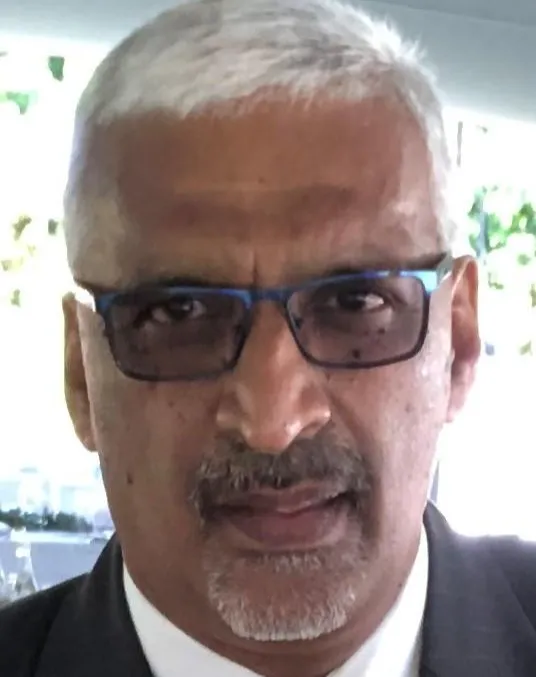Reimagining school safety: innovative strategies to prevent and address pupil violence
Violent behaviour is learnt behaviour

A violent fight recently broke out among pupils at Centenary Secondary School, in Asherville, Durban.
Image: File
SCHOOL violence is not a phenomenon that is only prevalent in South Africa. It is, in fact, a problem that almost all schooling systems across the world have to deal with. The recent fatal stabbing of a Grade 11 pupil at Lesedi Secondary School, in Gauteng, by a fellow pupil is yet another instance which suggests that there is a serious need to rethink the current anti-violence school policy.
What is becoming increasingly clear is that conventional disciplinary and security approaches have limited effectiveness in sustaining long-term change and that there is indeed a need for alternative ways of preventing violence in South African schools.
Research on violence in South Africa reveals that there is a strong correlation between levels of violence and levels of poverty and unemployment.
Contexts
Where socioeconomic conditions are dire, such areas are likely to be more susceptible to school violence than better-resourced contexts, mainly because communities with high unemployment and poverty often do not have the necessary social cohesion and informal social controls to deter violent behaviour. Such communities have fewer good role models, mentors and positive peer influences.
It is not unusual to expect that when families struggle financially, community institutions are weak and schools become places where violence is likely to manifest. Having said that, it is also important to understand that poverty in itself does not automatically cause violence or that all poor children will be violent.
There is much evidence in South Africa that many poor children show enormous resilience and do succeed academically, even in the context of severe destitution.
While deprived socioeconomic environments present conditions that might breed violence, school violence is also prevalent in former Model C and private schools in South Africa.
However, such schools are better positioned in terms of both financial and human resources to intervene and address violent eruptions when they occur. It is unfortunate that in cases where financial stress affects family stability, especially where unemployment and poverty are prevalent, the effect is sometimes harsh parenting practices and domestic violence.
It is not uncommon to find that children who experience violence at home are more likely to exhibit aggressive and rebellious behaviour at school.
There is much research that supports the theory that violent behaviour is learnt behaviour, usually from a young age, both in the family context and in society. When adults are unemployed or are working long hours in low-wage jobs, child care decreases significantly. Parental guardianship and vigilance are crucial factors in preventing crime and violence. Very often, these multiple factors work together to create the conditions for violence in schools that take the form of bullying, sexual and gender-based violence, gang-related intimidation and full-on fighting.
Poverty and the absence of material possessions to show success and the difficulty with finding legitimate ways to achieve success mean that there is a likelihood that, in order to achieve status and material resources, violence is viewed as a viable option. In schools, violent conflicts are frequently about material possessions like cell phones, the need to command respect and to claim territory in classrooms and on playgrounds. Such violence occurs in both high schools and primary schools, and among boys and girls.
Playgrounds
Teachers who provide first-hand accounts of playground violence report frenzied mob-like spectacles in which some young children chant and incite, resulting in further escalation of violent encounters. Such morbid behaviour from our youth is a clear indication that, as a society, we are getting things seriously wrong and that there is a need for radical new thinking on how we socialise young people.
How, then, might we imagine schools differently, as spaces of healing, participation, and peacebuilding?
Various innovative and bold ideas have been attempted in different country contexts, and research on such initiatives points to some success in stemming school violence. One such idea is the transformation of schools into community hubs that are open for pupils and families. Such hubs can be spaces that provide meals, mental health support, arts, sports, and other cultural activities.
Schools then become more than disconnected buildings where pupils go to learn, but become places of care, healing and community building, where all children and community members feel a sense of belonging and take ownership for communal well-being.
Lead
As usual, there will be sceptics who will find reasons why this will not work or ask questions as to who should take responsibility for this. What is clear is that the education department cannot lead this, but that local people have to take the lead. Successful models usually start small and grow in scale as the benefits of their activities begin to show. It could well begin with recruiting community mentors or life coaches who are not teachers, but trained peers, successful older youth or elders who engage with at-risk pupils regularly.
Research has shown that formerly incarcerated individuals (ex-prisoners) who have been rehabilitated can have a powerful influence on school youth. Such individuals have had first-hand experience of the consequences of their poor choices and the punishment that goes with it. The Lesedi school fatal stabbing incident is a clear example of naive youth who had not fully understood the consequences of their actions.
In restorative justice programmes in New Zealand, for example, the creation of Peace Studios, where pupils create art, music, and theatre about conflict, reconciliation, and gender sensitivity, has yielded positive results. This kind of initiative gives the youth an active role in social change as it shifts conflict resolution from punishment to dialogue.
Animals as a source of healing therapy have been used extensively in different social contexts, including schools. The Funda Nenja project (learning with a dog) in KwaZulu-Natal is a fascinating programme. While it is not located directly in schools, the programme nurtures children into caring and responsible young adults, building bonds between child and dog, thereby opening up possibilities for their self-development.
Children learn about discipline, respect and care and are likely to apply these values when interacting with fellow pupils, parents, teachers, people of different cultures and their environment. The programme draws over 100 children each week to interact and learn from each other. What is remarkable about the success of such projects is that they are initiated by people with know-how and a deep sense of social responsibility, and who consciously make this an important part of their lives.
Healing
Schools can also make trauma awareness and healing a central aspect of teaching and learning across all subjects, so as to learn emotional literacy and mindfulness. The idea of thinking of schools as therapeutic learning communities might seem far-fetched.
This can, however, happen when the entire school environment centres on trauma-informed care, where staff are trained to recognise and respond to trauma and build healing into the daily schedule. Such schools then do not view disruptive behaviour as defiance, but as a symptom of underlying trauma that pupils may be struggling with.
In SA, we are yet to harness the full potential of technology to address school violence. The youth have become digital natives, taking to technology with ease and creativity. They can be empowered to use the tech they trust to design apps or digital reporting platforms where violence or bullying can be reported anonymously.
Schools that have the technological infrastructure can develop technology-enhanced early warning systems using data analytics to identify pupils at risk before incidents occur. AI systems immediately analyse patterns in academic performance, absenteeism and punctuality and disruptive behavioural reports to flag students that might need intervention.
Research also indicates that when pupils are invited to participate in decision-making with regard to an acceptable code of conduct, they feel trusted and are likely to feel ownership of the rules they follow. They also hold each other accountable for abiding by such rules.
There have also been several successful permaculture and environmental justice projects in South Africa where schools establish gardens and environmental projects that combine ecological care with social responsibility and group problem-solving. These projects encourage cooperation, collective responsibility and achievement and can counteract alienation that is often behind violent behaviour.
Some schools have created outdoor classrooms, non-religious meditation gardens and whole-school meditation sessions, and even ‘anger management’ walking trails. Others have replaced detention with meditation rooms. Research shows that there has been a dramatic reduction in violence in such schools. Again, in the SA schooling context, these might seem like unrealistic, soft-touch ideas, but we are slowly beginning to recognise the power of spirituality and nature to reduce stress and aggression.
As a society, we cannot expect to be doing the same things and expect different results. What is clear is that there is a need to address the root causes of school violence rather than simply reacting to the symptoms by punishing negative behaviour. At a school level, pupils have to be active participants rather than passive receivers of discipline. We have to move from punitive to healing approaches where offenders, victims and school and community members discuss harm, responsibility and repair.
In essence, what we need is a paradigm shift in thinking about how to address violence in South African schools.

Professor Suriamurthee Maistry
Image: Supplied
Professor Suriamurthee Maistry is a Decolonial and Critical Curriculum Scholar in the School of Education at the University of KwaZulu-Natal.
** The views expressed do not necessarily reflect the views of IOL or Independent Media.